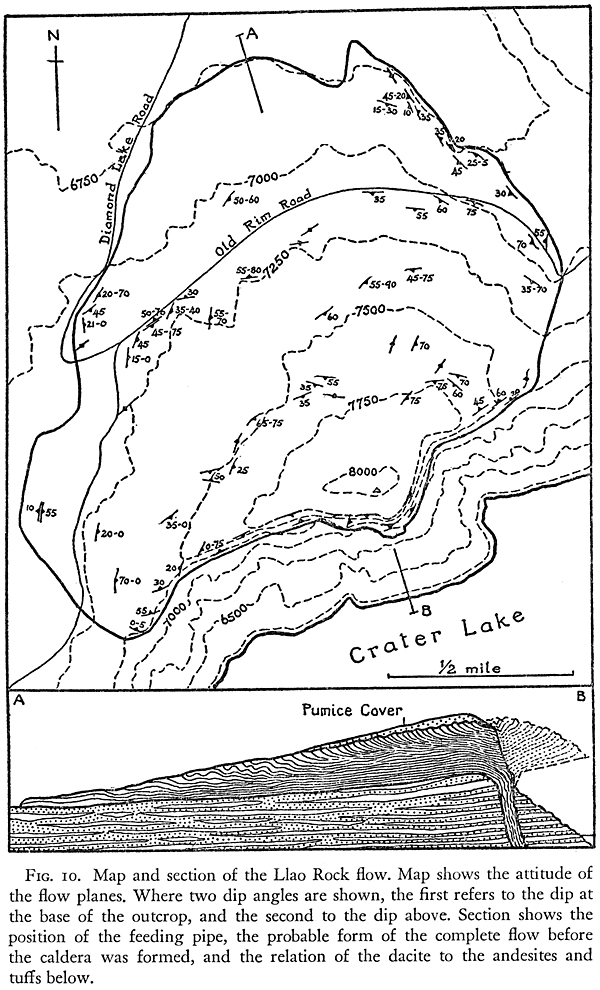|
Fig. 10. Map and section of the Llao Rock flow. Map shows the attitude of the flow planes. Where two dip angles are shown, the first refers to the dip at the base of the outcrop, and the second to the dip above. Section shows the position of the feeding pipe, the probable form of the complete flow before the caldera was formed, and the relation of the dacite to the andesites and tuffs below. |
North of the crevassed area of the flow, farther from the vent, the surface is largely concealed by pumice and scoria, and the scattered outcrops of red, brecciated lava show little fluxion. Along the steep eastern margin, however, the banding is clearly displayed, dipping inward at low angles near the base but steepening inward and upward to verticality. In a few places, the marginal lava shows a gentle outward dip. How closely these structures resemble those seen in the Grouse Hill and Llao Rock flows is apparent from a comparison of figure 12 with figures 10 and 11.
Nature of the lava. The interior parts of the Cleetwood flow are normally pale gray and locally almost pumiceous, but the top and bottom usually consist of black obsidian, and it is here that the best development of spherulites and lithophysae may be found. Throughout the mass, fluidal banding is strong, and generally it is emphasized by platy and slabby jointing. On some of the joint faces, particularly at the top of the flow, specular hematite forms a patchy coating. It is also in the higher parts that the lava has been most reddened by escaping gases. As compared with the andesites of Mount Mazama and indeed with most of the other dacites, the Cleetwood flow is poor in basic inclusions. Porphyritic plagioclase is ubiquitous, but quartz seems to be absent; the other phenocrysts are generally hypersthene and red-brown hornblende, augite either being absent altogether or occurring only as microliths in the glassy groundmass.


